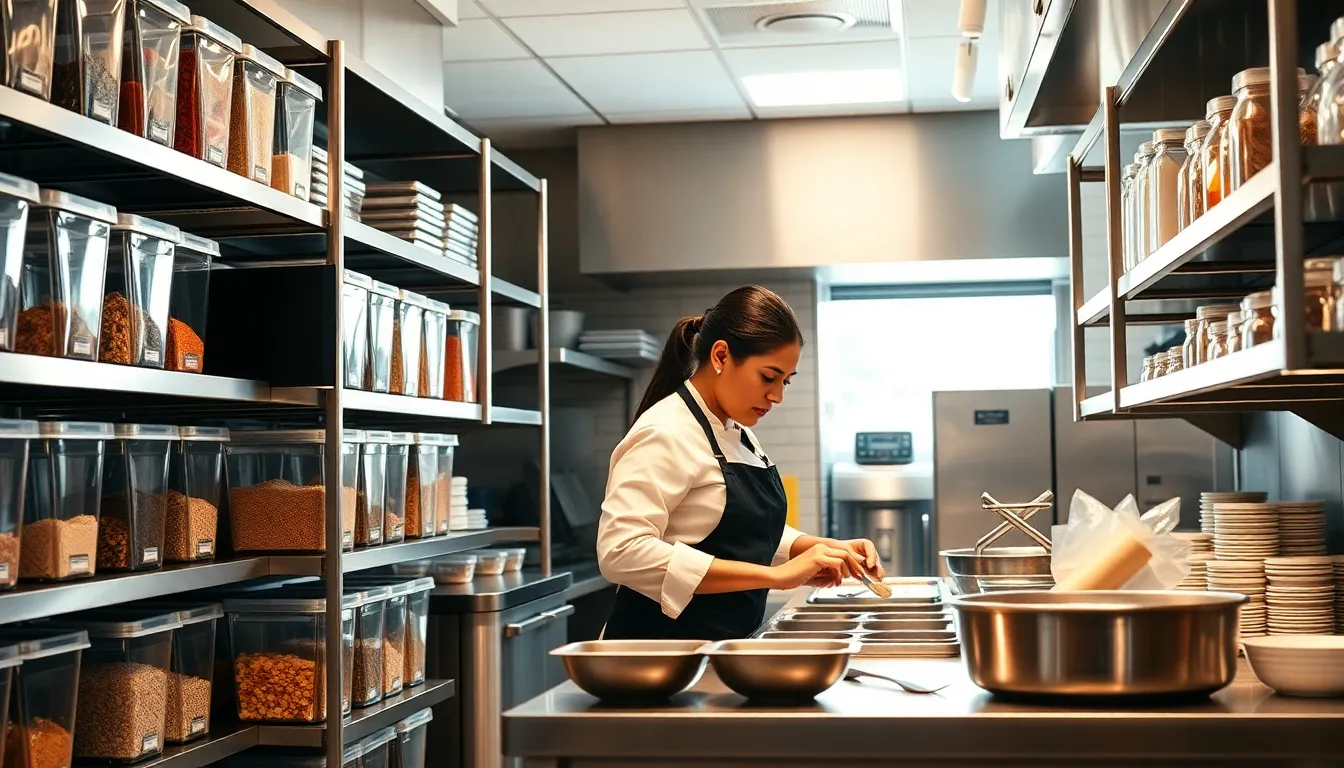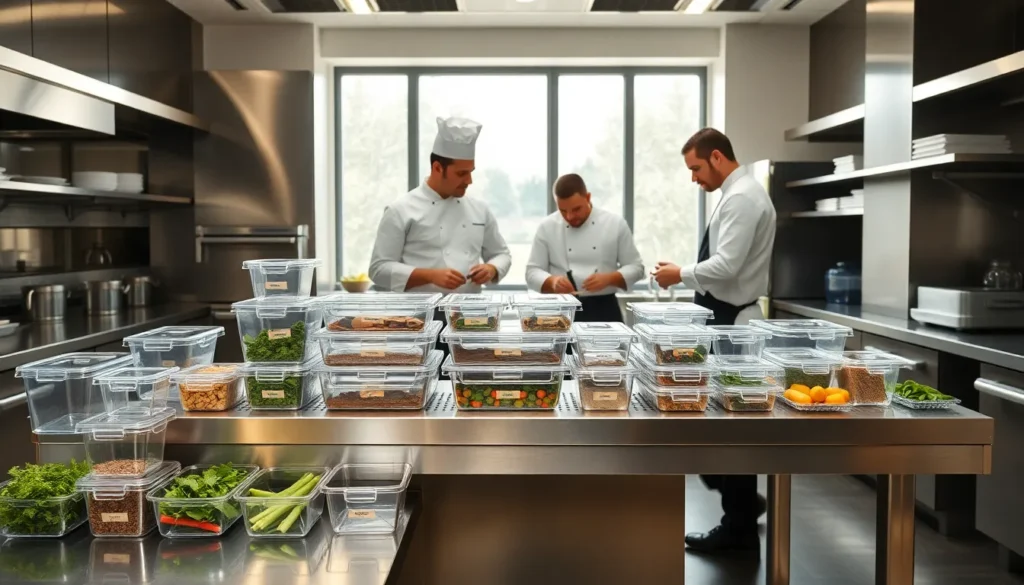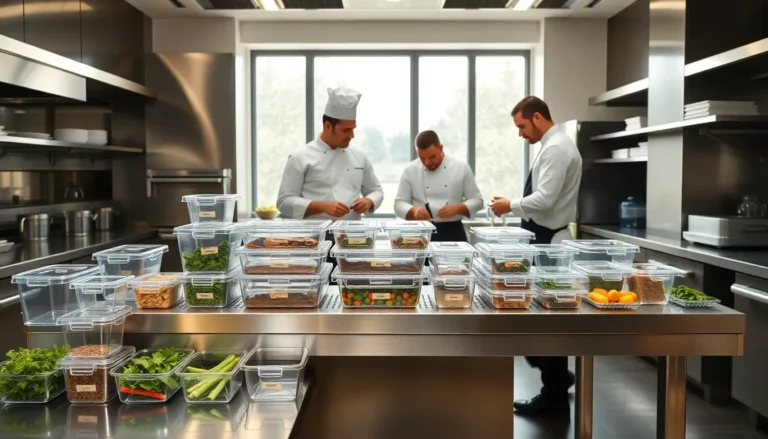When running a restaurant, every inch of space and every item counts. You wouldn’t turn your kitchen into a chaotic mess, right? Enter restaurant storage containers, the unsung heroes of kitchens everywhere. These handy bins are not just about keeping things tidy: they ensure food safety, streamline operations, and yes, even save your sanity. So, if you’re tired of hunting for that elusive jar of spices or dealing with a fridge that looks like a tornado hit it, read on. This guide will investigate into everything you need to know about restaurant storage containers, because a happy chef makes for a successful kitchen.
Table of Contents
ToggleImportance of Restaurant Storage Containers

Restaurant storage containers play an integral role in operational efficiency. Not only do they help in organizing ingredients and supplies, but they also contribute to food safety standards. The right storage solutions prevent spoilage, minimize waste, and keep kitchens running like a well-oiled machine. When everything has its place, chefs can focus on what they do best, creating delicious dishes without the distraction of a messy workstation.
Also, proper storage gives staff easy access to items, speeding up prep time. Think about it: a well-organized kitchen not only enhances productivity but also creates a more pleasant work environment. And let’s face it, nobody enjoys rummaging through disorganized shelves while trying to find a simple can of tomatoes.
Types of Restaurant Storage Containers
Understanding the various types of restaurant storage containers can significantly enhance kitchen efficiency. Here’s a quick rundown:
Plastic Containers
Lightweight and versatile, plastic storage containers are a staple in many kitchens. They are easy to clean and come in various sizes. Look for BPA-free options to ensure safety.
Glass Containers
Glass containers offer an elegant touch, are microwave safe, and do not absorb odors. They are perfect for stocking sauces or dressings but can be heavier and more fragile.
Metal Containers
For long-term storage, metal containers are unrivaled. They are durable and often come with airtight seals, making them great for bulk items. But, they aren’t microwave-safe.
Vacuum-Sealed Containers
These are perfect for extending the shelf life of food. By removing air, they minimize spoilage by preventing oxidation. Chefs use them for everything from meats to prepped ingredients.
Specialty Containers
Consider specialty options like food pans, bulk bins, or condiment containers for specific needs. These are designed for particular items, such as sauces or dry goods, enhancing usability.
Material Considerations for Storage Containers
When choosing storage containers, the material is a critical factor to consider. Each type of material has its own pros and cons.
Plastic
Plastic containers are lightweight and typically less expensive. But, ensure they can withstand temperature fluctuations if they will be used in freezers or dishwashers. Look for high-density polyethylene or polypropylene options for durability.
Glass
While more costly, glass containers are non-porous, meaning they won’t absorb food odors or stains. They are perfect for items requiring transparency to easily monitor content levels. Just remember they can be cumbersome to manage.
Stainless Steel
Stainless steel is incredibly durable, making it ideal for high-volume kitchens. It resists corrosion and is easy to clean. The downside? They lack transparency, so one needs to label them to avoid confusion.
Eventually, the choice of material boils down to where and how the containers will be used in the kitchen.
Best Practices for Organizing Storage Containers
To keep storage containers functional and efficient, here are some best practices to carry out:
- Label Everything: Clear labels make it easier for staff to locate items quickly, no more mystery ingredients. Use waterproof labels for longevity.
- Use Clear Containers: Opt for transparent containers when possible. This allows chefs to see contents at a glance, saving time and reducing waste.
- Stack Wisely: Maximize space by stacking containers that fit well together. Ensure the lids are secure to prevent spills.
- Regularly Check Inventory: Carry out a system for regularly reviewing stock. This helps in minimizing food waste and ensures freshness by rotating older items to the front.
- Use the Temperature Zones: Store perishable items in the coldest section of the fridge, while dry goods should have a dry, cool environment.
Maintenance and Hygiene Tips
Maintaining the cleanliness and hygiene of storage containers is crucial for food safety:
Clean Regularly
Containers should be cleaned every day. Use hot, soapy water and rinse thoroughly. Inspect for cracks and chips regularly, as damaged containers can harbor bacteria.
Sanitize Often
Use a safe sanitizer after cleaning, especially for food-contact surfaces. This extra step helps eliminate bacteria that could compromise food safety.
Replace When Necessary
Worn-out containers can be more trouble than they’re worth. If a container is stained, warped, or scratched, it’s time to replace it. Invest in quality containers to ensure longevity and performance.



